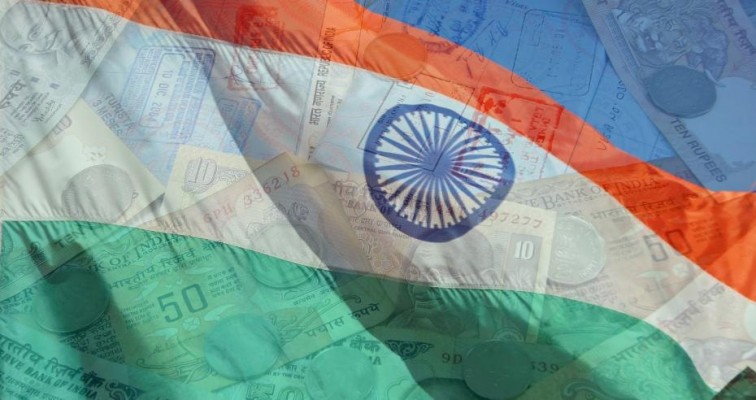
Mobile wallet growth in India
It seemed next to impossible when the thought of digitalizing the economy floated the market. India has always been a budding market and even today the country enjoys 97% of its transaction in cash. The situation was put to test in the market when the whole country which was banking on cash was forced to depend on other avenues as 86% of the cash in the market was withdrawn overnight.
The cash that the population held was useless as the currency was discontinued. This wave shocked the world and the population was forced to use the e-wallets and banking apps to make an even small transaction. The country showed that if need be it has full potential to grow into a fully digitalized economy.
What has led to this easy acceptance?
What is often seen is that people are not against such growth ideas what they actually lack are the resources and the skills. They would support these progresses when they know that they will be the end users and would enjoy directly from it. The digitalization which leads to the increased use of the mobile wallet was widely appreciated and accepted due to the accessibility of smartphones and free internet.
The teir-2 and teir-3 cities in India have access to fully feature low-cost smartphones. Data shows that the mobile retail has grown from 5% in 2012 to a massive 17% in 2016. Part of the credit to such huge acceptance also goes to the online retailers who offered huge discounts. The big business leaders in e-commerce Flipkart and Snapdeal have accepted that on big sale days their website traffic scored to above 80%. The population accesses these sites using mobile and internet service.
Thanks to Reliance Jio for free internet for months that every user can now have access to the online world. What Jio has done is not only offered free services but forced other providers to reduce their plans cost as well.
All in all a great plan where the receivers have- free connection, affordable devices, and knowledge. This only goes on to support that the mobile wallets in India are here to stay.
What are the major institutes doing?
When we are talking about the growth of the mobile wallets we just have to dig into the activities of the major regulators of the market- the stand of the government of India (GOI) And Reserve Bank of India (RBI).
There is no denying that the Government of India is extending all hands support to those who are ensuring that these digital services are available to all. Since 2014 efforts are made to include the unbanked population to be included in the bank goers. What has been a breakthrough was the launch of the BHIM app (Bharat Interface for Money). It is based on the UPI – United payments Interface which allows an immediate bank transfer between different banks. It is a common platform for all banks and any account holder can send or receive money using this online app.
The app has been a huge success and many users have immediately taken to this platform for money transfer. Since it is regulated by the major institutes itself there is an instant trust. Currently, BHIM app is available in two languages- English and Hindi but in near future, there are plans for including regional languages as well. It enjoyed 3 million downloads within just the first month of launch which is something.
Reserve bank of India is also making every effort to ensure that private players who are onboard with the mission are provided full support. It was with this intention that Paytm and airtel money started their operation. They are a huge success and we all know that during demonetization the only support many of us had was paytm.
These e-wallets are aimed at providing online transaction options to many who have money in these accounts. They are a third-party platform but have gained easy support. There are many discounts which are offered to the users of these e-wallets along with the benefit of interest for a certain amount being added to the account.
This is increasing the popularity of these wallets. There is no doubt that with the regulations and quality services the number of wallet users is going to grow. M-banking and e-commerce are the future of the country.
Who are the market leaders for e-wallets?
We cannot complete the story without the mention of the most popular e-wallets. The majority of the population is using them now and there is huge competition. They all aim at providing similar services but still, there are preferences of the users which have made each of them land in the race.
- Paytm: The fastest growing company that is recognized and supported by the reserve bank. It was launched in 2014 and has been growing with catering to 30 million orders on digital and physical goods. Paytm is definitely dominating the market for now.
- Mobiwik: Stable compatibility with online bills and mobile recharge sites along with higher ease with the e-commerce websites is what makes this wallet so popular. What makes the 12 million users opt for this platform is the abundance of mobikwik offers which are available at the perusal for the users, every time they make any truncation from the wallet, earning supercash in their account henceforth.
- Oxigen: Even though an old player in the payments market Oxigen entered the mobile wallet market only in 2014. Used commonly for easy recharge and payments it is popular amongst people who keep sending friends and family money. It is huge on the social platforms as it allows sharing using them as well.
- Citrus pay: This is another player which providers mobile banking services had has been a little new entry in the list. The transactions of about 1 billion dollars have been made and it has many known investors like E-context Asia and Sequoia Capital to its lists.
- mWallet: This is a great wallet which is recognized by Reserve bank of India. It is used for easy bill payments and send easy money to family and friends.
There is no doubt that India is currently witnessing an exponential growth in this area. With the government initiatives and the private players, the cashless economy is all set to be a huge success.





